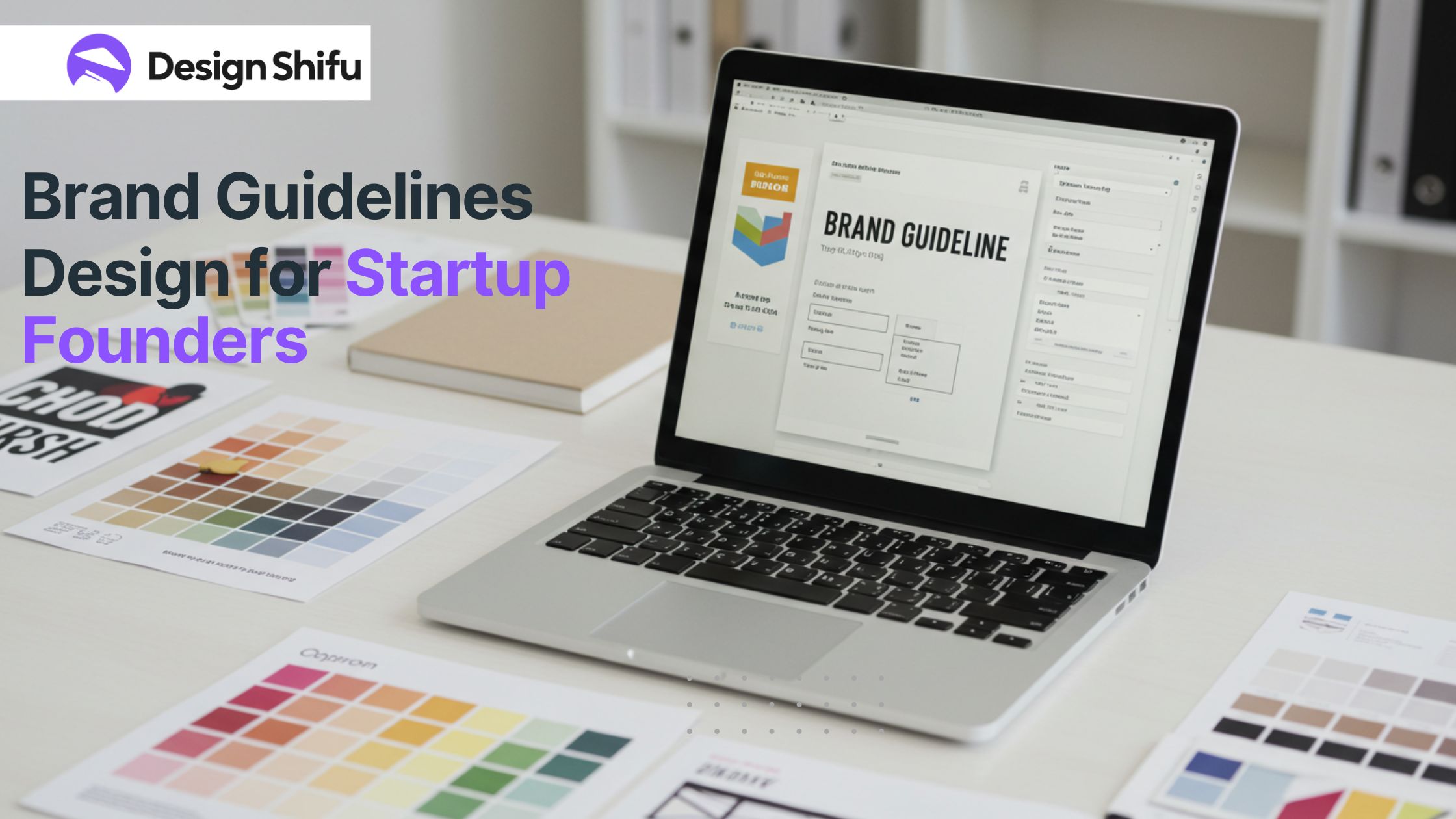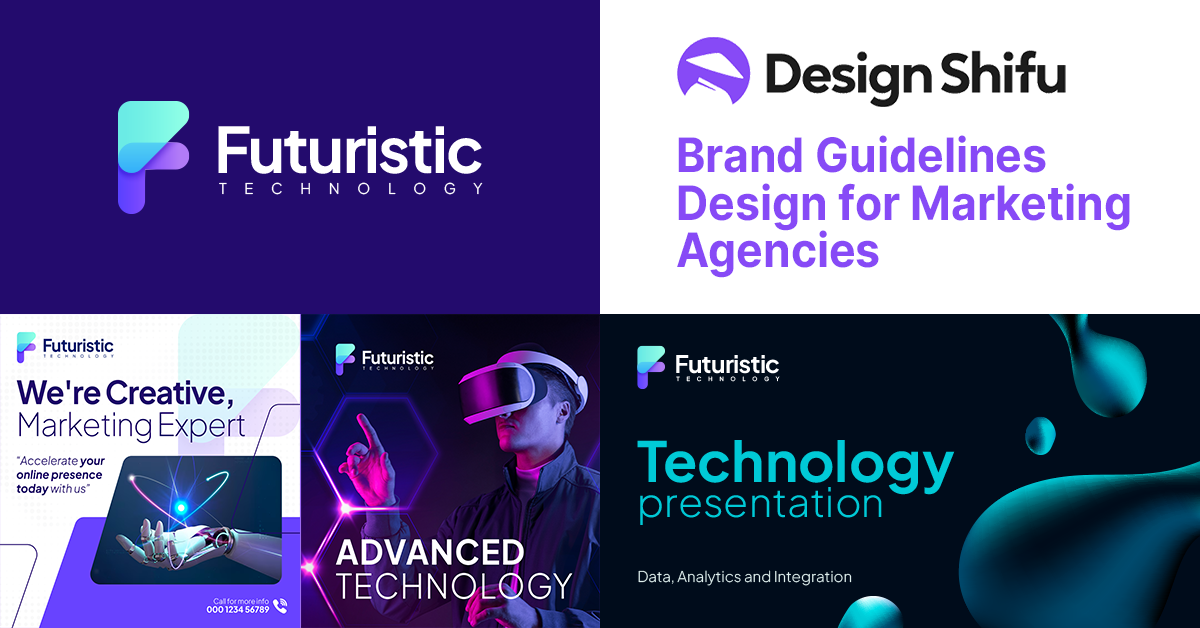Your Brand Needs a Rulebook—Here’s Why (and How to Make It Look Damn Good)
As a marketing consultant, you are the brand whisperer. You help businesses craft messages, visuals, and strategies that resonate—but what about your own brand? If your colors, fonts, and tone shift with every client pitch or LinkedIn post, it’s time to hit pause.
Enter: brand guidelines—your creative command center. Not just a PDF with your logo slapped on it, but a strategic, beautifully designed document that keeps your identity consistent, powerful, and instantly recognizable.
Ready to take your brand from average to extraordinary? Let’s build a strategic brand playbook for marketing consultants working with diverse clients
TL;DR:
Brand guidelines ensure a consistent brand identity and are a key deliverable for marketing consultants. They help clients maintain uniformity, build trust, and scale. Essential components include:
- Brand Overview: Mission, vision, values, story, target audience.
- Logo Usage: Primary logo, clear space, color variations, incorrect usage.
- Color Palette: Primary/secondary colors with HEX, RGB, CMYK codes.
- Typography: Primary/secondary fonts, weights, hierarchy.
- Imagery/Iconography: Photography, illustration, icon styles.
- Voice/Tone: Brand personality, tone variations, writing guidelines.
- Applications: Templates for business collateral, digital assets, ads.
- Dos and Don’ts: Rules to avoid misuse.
What Are Brand Guidelines?
Brand guidelines, also known as brand style guides or brand books, are a set of rules and standards that define how a brand communicates its identity visually, verbally, and tonally.
They act as a single source of truth for anyone interacting with the brand, from internal teams to external partners, ensuring that every piece of content—whether a social media post, website, or print ad—feels unmistakably like the brand.
For marketing consultants, brand guidelines are not just a deliverable but a strategic tool that empowers clients to maintain consistency, avoid missteps, and amplify their brand’s impact. Well-designed guidelines are clear, actionable, and flexible enough to accommodate growth while staying true to the brand’s core identity.
Why Brand Guidelines Matter for Marketing Consultants
As a marketing consultant, your role is to guide clients toward building a brand that resonates with their target audience and drives business objectives. Here’s why brand guidelines are critical:
- Consistency Across Channels: In an era where brands interact with customers across multiple platforms—social media, websites, email campaigns, and physical collateral—guidelines ensure uniformity in messaging and visuals.
- Efficiency for Teams: Clear guidelines save time by providing teams with ready-to-use rules, reducing the need for repetitive approvals or corrections.
- Brand Trust and Recognition: Consistent branding builds familiarity and trust, making it easier for audiences to recognize and connect with the brand.
- Scalability: Guidelines allow brands to grow and adapt without losing their identity, whether entering new markets or launching new products.
- Client Empowerment: For consultants, delivering robust guidelines equips clients to manage their brand independently, reinforcing your value as a strategic partner.
Key Components of Brand Guidelines
Designing effective brand guidelines involves finding harmony between creativity and structure. Following are the key elements marketing consultants must include, along with practical advice on how to design each part.
1. Brand Overview
Brand overview lays the groundwork by defining the brand’s essence. This section must contain:
- Mission Statement: A short statement of the purpose and aims of the brand.
- Vision: The brand’s long-term desire.
- Values: Key principles that inform the brand’s actions and decisions.
- Brand Story: A story that tells the brand’s origin, purpose, and what differentiates it.
- Target Audience: Brief overview of the brand’s ideal customers, including demographics, psychographics, and pain points.
Tip for Consultants: Co-work with clients to hone these aspects. Organize workshops or interviews to discover their brand’s distinctive story and align them with their business goals.
2. Logo Usage
The logo is often the most recognizable element of a brand. This section should detail:
- Primary Logo: The main logo and its acceptable variations (e.g., horizontal, vertical, or icon-only versions).
- Clear Space and Minimum Size: Rules for ensuring the logo is legible and not overcrowded by other elements.
- Color Variations: Guidance on when to use full-color, monochrome, or black-and-white versions.
- Incorrect Usage: Examples of what not to do, such as stretching, recoloring, or adding effects to the logo.
Tip for Consultants: Use visual examples to make this section intuitive. Include mockups of correct and incorrect logo usage to clarify dos and don’ts.
3. Color Palette
A defined color palette reinforces brand recognition. This section should specify:
- Primary Colors: The core colors that represent the brand, including HEX, RGB, CMYK, and Pantone codes for digital and print use.
- Secondary Colors: Complementary colors for accents or supporting elements.
- Usage Guidelines: Instructions on how to use colors (e.g., primary colors for headlines, secondary colors for backgrounds).
Tip for Consultants: Ensure your palette meets accessibility standards by testing on WebAIM’s Contrast Checker.
4. Typography
Typography shapes the brand’s voice visually. Include:
- Primary Typeface: The main font(s) used for headings, body text, and other elements.
- Secondary Typeface: Alternative fonts for specific use cases (e.g., web-safe fonts as fallbacks).
- Font Weights and Styles: Guidance on using bold, italic, or regular weights.
- Hierarchy: Examples of how to structure text (e.g., headings, subheadings, body copy).
Tip for Consultants: Recommend fonts that are widely available or provide licensing information for premium fonts. Include web-safe alternatives for digital applications.
5. Imagery and Iconography
Visuals play a key role in brand perception. This section should cover:
- Photography Style: Guidelines for the type of imagery (e.g., candid, staged, high-contrast, or warm-toned).
- Illustration Style: Rules for custom illustrations, if applicable (e.g., line art, flat design).
- Iconography: Standards for icons, including size, color, and style consistency.
- Image Treatments: Instructions for filters, overlays, or cropping styles.
Tip for Consultants: Provide a mood board or visual examples to illustrate the desired aesthetic. Highlight stock photo sources or custom photography guidelines if relevant.
6. Voice and Tone
The brand’s voice defines how it communicates with its audience. Include:
- Brand Voice: Key descriptors (e.g., professional, friendly, witty) that define the brand’s personality.
- Tone Variations: How the voice adapts for different contexts (e.g., formal for whitepapers, conversational for social media).
- Writing Guidelines: Rules for grammar, punctuation, and style (e.g., AP Style, Oxford comma usage).
- Key Messaging: Core messages or taglines that encapsulate the brand’s value proposition.
Tip for Consultants: Develop a voice chart with examples of how the brand sounds in different scenarios (e.g., customer support, marketing campaigns). This helps clients apply the voice consistently.
7. Applications and Templates
Show how the brand comes to life across various touchpoints:
- Business Collateral: Templates for business cards, letterheads, and presentations.
- Digital Assets: Guidelines for website design, social media posts, and email signatures.
- Advertising: Examples of print or digital ads that align with the brand.
- Merchandise: Rules for applying the brand to products like packaging or apparel.
Tip for Consultants: Create customizable templates (e.g., in Canva or Adobe InDesign) to make it easy for clients to produce branded materials.
8. Dos and Don’ts
A clear list of dos and don’ts helps prevent brand misuse. Examples include:
- Do: Use the primary logo on a white background for maximum impact.
- Don’t: Alter the logo’s proportions or colors.
Tip for Consultants: Keep this section concise but impactful, using visuals to reinforce the rules.
Steps to Create Brand Guidelines as a Marketing Consultant
- Get to Know the Client’s Brand: Begin with a discovery session to get familiar with the client’s mission, audience, and competition. Consult with questionnaires or workshops.
- Work Together on Visual Identity: Coordinate with designers (or the client’s in-house design team) to create or establish visual items such as logos, colors, and typography.
- Create the Guidelines: Structure the guidelines in a logical, easy-to-follow structure. Have a neat, branded look for the guidelines document to match the branding.
- Provide Feedback from Clients: Present drafts to the client and revise on the basis of their feedback to make sure the guidelines meet their vision.
- Handover or Training: Provide a tour of the guidelines to the client’s team with an explanation of how to implement them effectively.
- Update as Needed: Invite clients to update the guidelines from time to time to reflect brand development or emerging marketing channels.
Best Practices for Marketing Consultants
- Be User Friendly: Don’t use jargon and create guidelines that are easy to understand and navigate using headings, visuals and examples.
- Be Flexible & Controlled: Offer flexibility and control to allow for originality, while controlling the variables to maintain consistency.
- Be Accessible: Provide both a PDF and digital copy (ex. microsite, shared drive).
- Be Reflective: Include mock-ups of what the brand looks like in real scenarios to provide assurance.
- Be Client Based: Tailor the guidelines around your client’s desired needs (i.e. small start up v. major corporation)
Common Challenges and How to Overcome Them
Issue: Clients don’t follow, or misuse guidelines.
Solution: Stress the value of consistency during onboarding, and offer clients easy-to-use templates to increase likelihood of following.
Issue: Guidelines that are so overwhelming that teams get confused.
Solution: Keep it clear and simple; only capture the essential items a brand should use, and offer additional documents for specialized case(s).
Tools for Creating Brand Guidelines
Marketing consultants can take advantage of tools to ease the burden of their work:
- Design Tools: Adobe InDesign, Canva, or Figma to produce professional-looking guidelines documents.
- Collaboration Tools: Notion, Google Docs, or Trello to collect client feedback and organize content.
- Brand Management Tools: Frontify or Brandfolder to establish a digital brand hub.
- Mood Board Tools: Pinterest or Milanote to collect visual inspiration.
Conclusion
For marketing consultants, the development of brand guidelines is part art, and part science. It uses a deeper, more impactful knowledge of the brand as well as a systematic approach to identifying a set of rules and then adding enough creativity to keep it relevant and workable.
When you are able to provide clear, complete and focused guidelines for your clients, you give your clients a way to develop an ongoing and manageable brand that makes sense to their audience.
And as you develop brand guidelines with clients across a variety of business sectors, you will use this content to build on your knowledge, create trust and develop long-term sustainable value.
FAQ
1. What should small business brand guidelines include?
A basic brand guideline includes resource points like rules for using your logo, color palette, typography, tone of voice, and examples of touchpoints of where your brand should ‘live’, for example social media and a business card. Start small and expand when you need to!
2. How long does it take to create brand guidelines?
It can take anywhere from 1 – 3 weeks to create guidelines depending on how complex your brand is and how clear you are with what you want. This includes research, understanding, collecting visual assets, and 2-4 rounds of feedback from the client.
3. Can marketing consultants use templates for brand guidelines?
Yes, they can. For startups or clients under time constraints, a quick solution is templates like a brand guidelines template on Canva or Adobe InDesign.
The advantage of a template is that it can be edited, however, using a template may limit your ideas as a designer. Custom designs allow for that flexibility and ownership of a brand, which ultimately reduces the risk of being a copycat.
4. How often do I need to revise brand guidelines?
Ideally guidelines are reviewed every 12 – 18 months or after significant jumping-off points for a brand e.g., new logo, new voice tone, or launch of new product. Regularly reviewing ensures guidelines remain in-line with current technology and market goals.
5. What is the difference between a brand book and brand guidelines?
A brand book is often a more complex version of brand guidelines often more story-centric by nature. Of course, brand guidelines detail some of these points, but brand books may include
6. How do brand guidelines help with content creation?
They act as a reference point for tone, imagery, color use, and logo placement—ensuring consistency across blogs, emails, ads, and social posts. This saves time, reduces revisions, and builds brand recognition faster




